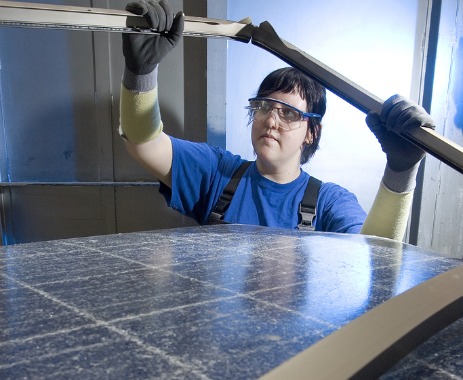Send your question to Umbra!
Q. Dear Umbra,
I bought a yogurt maker in Germany eight years ago that consists of a glass jar and a sturdy styrofoam container. It cost about $20, works wonderfully, and doesn’t require electricity. Why can’t I find a similar product in the U.S.?
Katherine
Cupertino, CA
 DIY that’s easy to digest.Photo: Johnny StilettoA. Dearest Katherine,
DIY that’s easy to digest.Photo: Johnny StilettoA. Dearest Katherine,
It’s not every day someone writes to ask a homemade yogurt question. DIY yogurt has some hippie stigma around it. It’s as if yogurt-making is something only crunchy types who make their own granola do. (Also an unfortunate stigma, as homemade granola is delicious and tastes heavenly atop homemade yogurt.)
The yogurt stigma is perhaps why you have found it difficult to find a yogurt-maker that doesn’t use electricity in the U.S.
As anyone who has made or eaten homemade yogurt knows, know this old besmirchment is misguided. What the uninitiated have yet to discover is that this healthy homemade treat, full of beneficial bacteria, is like what the ancient Greeks called ambrosia — the nectar of the gods and the food of immortality. Yogurt may truly be just that, with a hearty protein, calcium, and magnesium boost included. Making your own yogurt has the added benefits of saving you money and being free of corn syrup, sugar, and preservatives you might like to steer clear of. If you have access to local milk at a farmer’s market or elsewhere, you can start with raw material from a source you know and trust. And DIY yogurt is a more sustainable snack than the store-bought stuff, as there’s no packing to toss afterward.
I’m delighted you are looking for ways to make your yogurt without electricity, Katherine. We’ll get to that, but first let’s take a quick look at how yogurt becomes yogurt.
First, you start with milk (or soy milk if you’re making a vegan yogurt). Heating the milk to close to 80 degrees C (check with a food thermometer) denatures the milk proteins to help them set rather than form curds. The milk then gets cooled to close to 45 degrees C. Add the bacteria culture (some variation on Lactobacillus bulgaricus, Lactobacillus acidophilus, Bifidobacteria, and Streptococcus thermophilus) and hold that temperature for four to seven hours while it ferments.
You can make yogurt in a variety of containers, like a crock pot, an oven, or an electric yogurt maker. But if you’re looking to go electricity-free, a thermos is just the thing.
Chances are, you may not need to get any special equipment, with the exception of a food thermometer. Here are some great instructions for how to make the equipment-free version.
And if you want to order a non-electric, thermos-style yogurt-making container like the one you got in Germany years ago, check out the Yogotherm Yogurt Incubator or the Bulgarian Yogurt Maker for around $40. There’s another Euorpean brand called the Easiyo that seems to fit the bill, though it may only be available in Europe.
These non-electric containers look straight forward to use and their websites boil the whole yogurt-making experience down to about three steps. It’s easy, yo.
Culturedly,
Umbra



